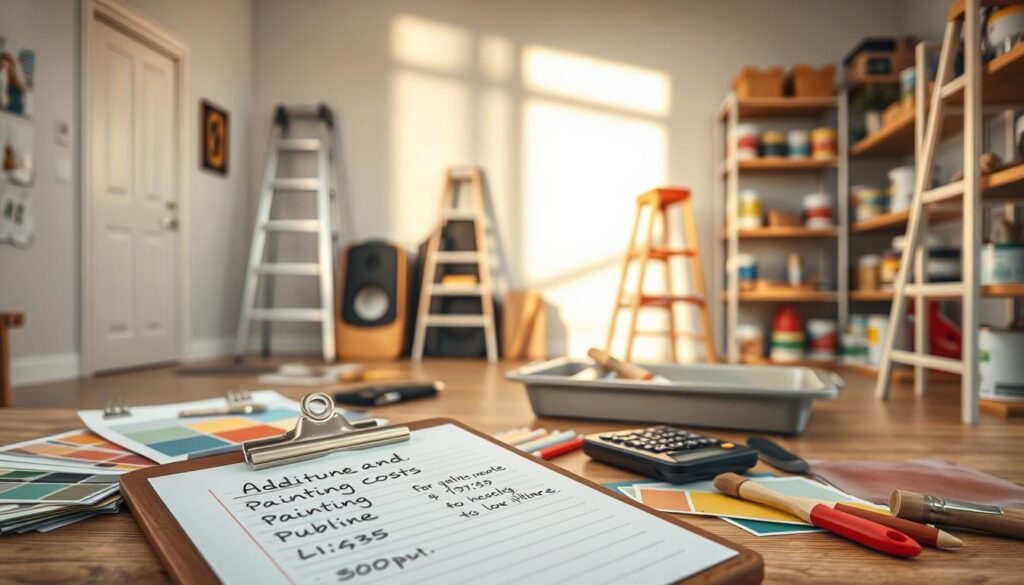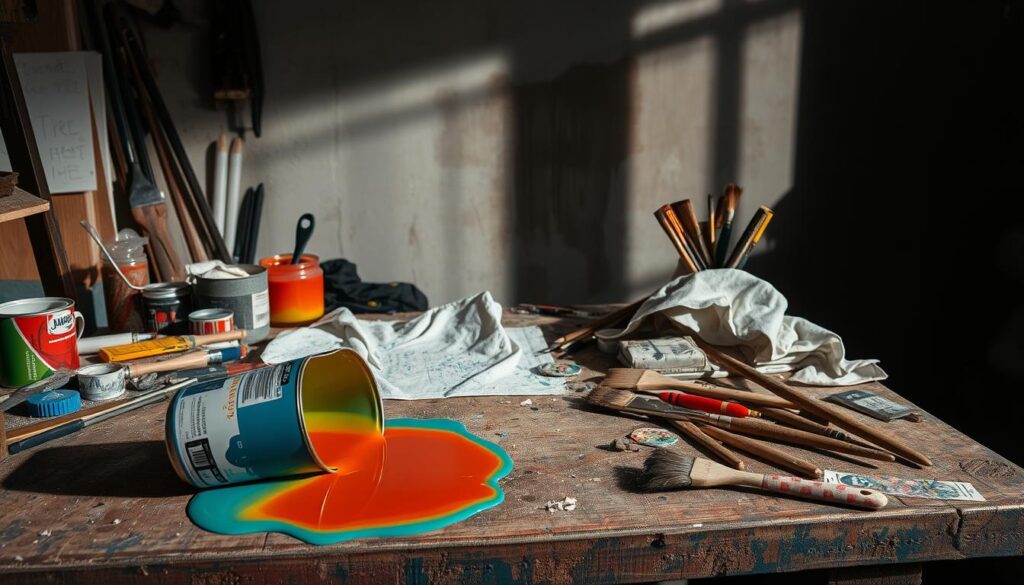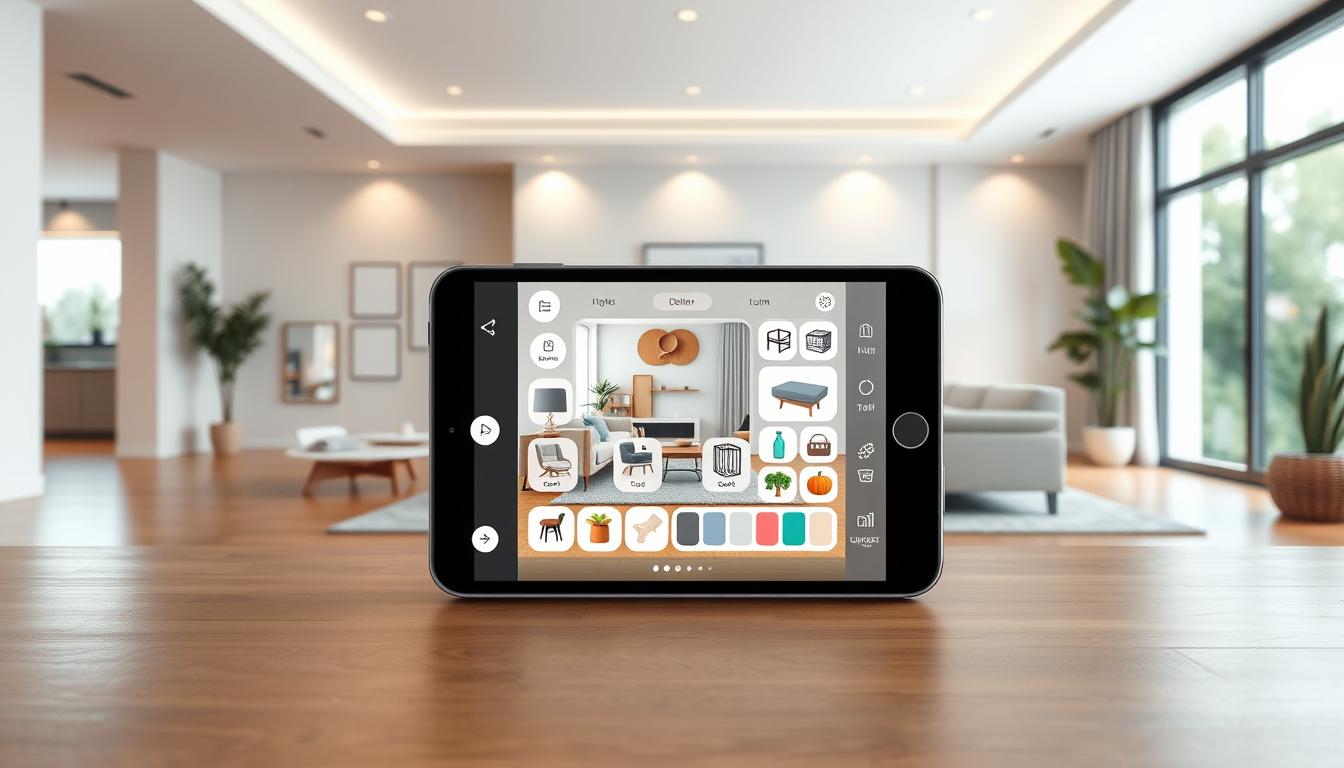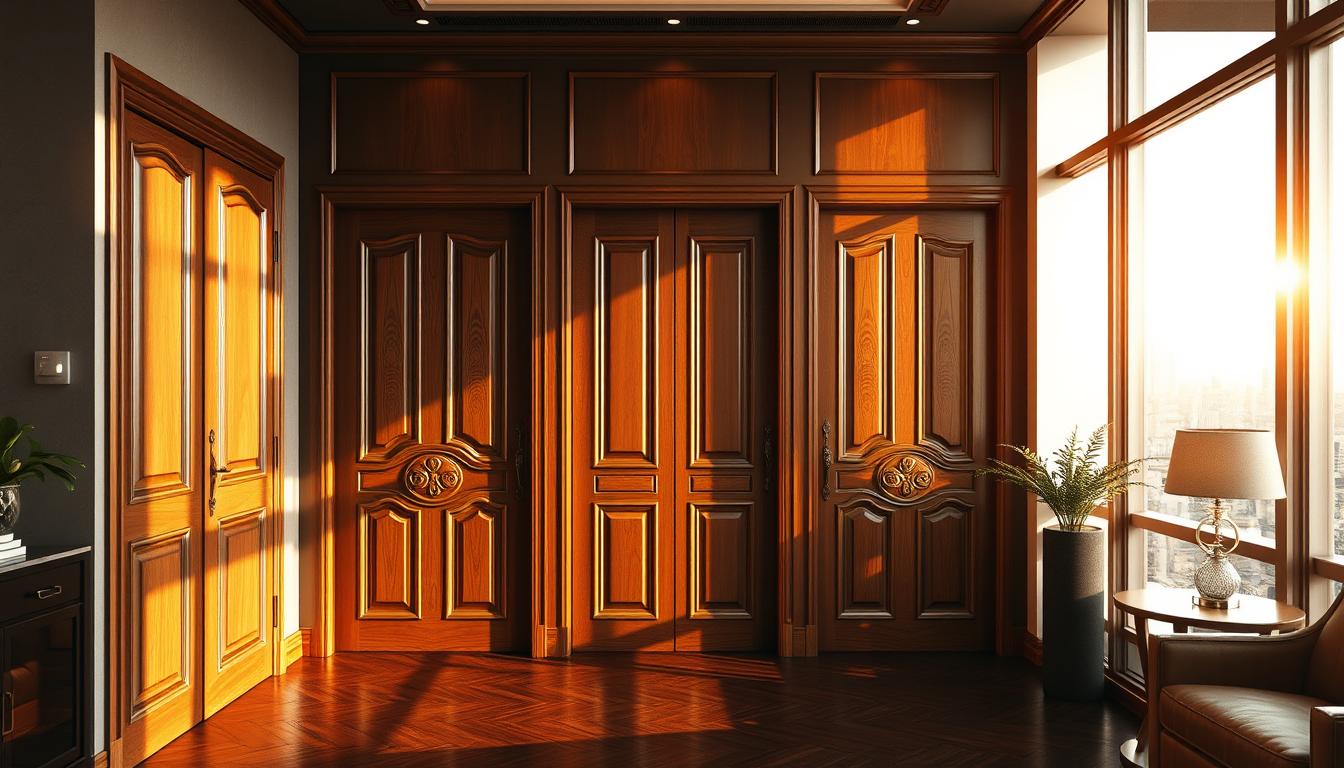Did you know painting your home’s interior can cost as little as $2.75 per square foot? This price can go up to $4.69 per square foot if you paint walls, trim, and ceilings. These numbers show how important it is to know what affects the cost.
When you plan to paint your home’s interior, think about all the details. We’ll help you figure out the cost. This way, you can make smart choices for your painting project.
Key Takeaways
- Understand the average cost per square foot for painting your home’s interior.
- Learn how including different elements like walls, trim, and ceilings affects the total cost.
- Discover the key factors that influence the overall cost of your painting project.
- Get insights into the importance of accurate estimation for your home improvement project.
- Find out how to make informed decisions when planning to paint your home’s interior.
Understanding the Factors That Affect Painting Costs
Many things can change how much it costs to paint your home’s inside. The size of the rooms and the paint quality are key. Knowing these helps homeowners guess how much painting will cost.
Room Size and Layout
The size and shape of your rooms matter a lot. Bigger rooms need more paint and work, which raises the price. Rooms with tricky shapes or angles also take longer to paint, adding to the cost.
Ceiling Height Considerations
Ceiling height is another big factor. Higher ceilings can make painting 20% to 40% more expensive. This is because taller ceilings need more equipment and more work to paint right.
“The height of your ceilings can significantly impact the complexity and cost of your painting project.”
Quality of Paint
The paint quality you choose also affects the cost. Better paints cost more but last longer and need less touch-ups. Cheaper paints might seem good at first but can cost more in the long run because you’ll need to paint more often.
Choosing the right paint is about finding a balance between upfront cost and long-term value. Think about what you need in a paint, like finish, color hold, and durability.
Average Cost Range for Painting Interior Spaces
Before you paint your home’s interior, it’s good to know the costs. The price can change a lot based on room size, ceiling height, and paint quality.
National Averages per Square Foot
The average cost to paint a room is between $2 and $6 per square foot. This price includes both the work and materials. To get a better idea, measure your rooms and think about how many coats you want.
A typical bedroom (about 150 square feet) might cost between $300 and $900. This depends on ceiling height and wall condition.
Breakdown by Room Type
Painting costs can differ by room type. This is because of size, complexity, and painting needs. Here’s a look at average costs for different rooms:
| Room Type | Average Cost |
|---|---|
| Bedroom | $450 – $700 |
| Living Room | $940 – $1,700 |
| Kitchen | $500 – $1,000 |
These prices are national averages. Costs can change based on where you live and your painting project details.
Seasonal Pricing Variations
Painting prices can change with the seasons. In peak season (summer and early fall), prices might go up because of more demand. Painting in the off-season (winter and early spring) could be cheaper.
Tips for Saving: Try painting in the off-season. Being flexible with your dates can also help you save.
Do-it-Yourself vs. Hiring Professionals
Deciding whether to paint your home’s interior yourself or hire pros is key. This choice affects your project’s cost, quality, and how long it takes.
Cost Comparison of DIY Projects
Doing it yourself can save on labor costs, a big part of the total cost. But, remember to factor in the cost of materials, tools, and your time. For a typical room, expect to spend $100 to $500 on paint and supplies, based on quality and brand.
DIY costs to consider:
- Paint and primers
- Brushes and rollers
- Drop cloths and tape
- Potential repair costs for mistakes
Pros and Cons of Hiring Painters
Hiring pros can cost $1,800 to $10,000, depending on room size and surface. Though pricey, pros offer expertise, efficiency, and a warranty.
Pros of hiring professionals:
- High-quality finish
- Time-saving
- Access to professional-grade equipment
- Warranty on work
Cons of hiring professionals:
- Higher upfront cost
- Less control over the project
- Need to research and hire a reputable service
When to Consider Professional Help
For complex surfaces, high ceilings, or big areas, consider pros. If you’re new to painting or short on time, pros ensure a top-notch finish.
Choosing DIY or hiring pros depends on your budget, time, and project complexity. Weighing the pros and cons helps you decide what’s best for you.
Essential Tools and Materials Needed
Before you start painting, make sure you have all the essential tools and materials. The right equipment is key for a professional finish. It ensures your interior painting project’s success.
Brushes and Rollers
The quality of your brushes and rollers greatly affects your painting project. Invest in good-quality brushes that match your paint type. Synthetic brushes work well on smooth surfaces, while natural bristle brushes are better for oil-based paints.
Rollers have different nap lengths. A longer nap is great for textured surfaces. A shorter nap is better for smooth surfaces.
Drop Cloths and Tape
Protecting your floors and trim is crucial. Use drop cloths or plastic sheets to cover your floors and furniture. Painter’s tape helps mask off areas you don’t want to paint, like trim and moldings.
Apply the tape carefully to ensure it’s straight and smooth.
Paint Types and Finishes
Choosing the right paint type and finish is vital. Paints have different sheens, from flat (matte) to high gloss. Flat paint is good for ceilings and low-traffic areas. Satin or semi-gloss finishes are more durable and suitable for trim, doors, and high-traffic areas.
| Paint Finish | Description | Best Use |
|---|---|---|
| Flat/Matte | Non-reflective finish | Ceilings, low-traffic areas |
| Satin | Soft sheen, durable | Trim, walls, moderate-traffic areas |
| Semi-Gloss | High sheen, very durable | Trim, doors, high-traffic areas |
Paint supplies like tape, masking paper, drop sheets, rollers, paint brushes, buckets, grids, and plastic add about 20% to the paint cost. It’s important to include these costs in your budget to avoid surprises.
Estimation Methods for Painting Costs
To avoid cost overruns, it’s key to know how to estimate painting costs well. This involves several steps. First, calculate the square footage of the area to paint. Then, estimate labor costs. Lastly, create a detailed budget.
Calculating Square Footage
Calculating a room’s square footage is simple. Just multiply the room’s length and width by the wall height. For example, a room that’s 12 feet long, 10 feet wide, and has 8-foot ceilings is calculated as follows:
(12 + 10) x 2 x 8 = 352 square feet for the walls. Remember to add the ceiling area: 12 x 10 = 120 square feet. So, the total area to paint is 352 (walls) + 120 (ceiling) = 472 square feet.
Estimating Labor Costs
Labor costs can greatly affect your painting project’s total cost. To estimate these costs, consider the hours needed and the painters’ hourly rate. Labor costs usually range from $20 to $50 per hour per painter. For a typical room, 2-4 hours of labor might be needed, depending on the job’s complexity.
| Room Type | Average Labor Hours | Labor Cost Range |
|---|---|---|
| Small Bedroom | 2-4 hours | $40-$200 |
| Medium Living Room | 4-6 hours | $80-$300 |
| Large Kitchen | 3-5 hours | $60-$250 |
How to Create a Budget
To budget for your painting project, add up material and labor costs. First, estimate the cost of paint, brushes, rollers, and other supplies. Then, add labor costs based on contractor estimates or your own calculations if you’re doing it yourself.
- Materials: Paint, brushes, rollers, drop cloths, tape
- Labor: Hourly rate of painters or your own time
- Miscellaneous: Cleanup, repairs, etc.
By categorizing costs, you can make a more accurate budget. This helps avoid unexpected expenses.
Additional Costs to Consider
When planning to paint your home’s interior, remember there’s more to it than just paint. Other costs can quickly add up if not planned for.

Prep Work: Cleaning and Repairing Walls
Preparation is crucial for a good paint job. Prep work means cleaning walls to get rid of dirt and grease. It also includes fixing cracks or holes with spackling or joint compound.
The cost of prep work depends on your walls’ condition. If your walls have old paint or damage, you might need professionals. This can increase labor costs.
Trim and Molding Painting
Painting trim and molding is just as important as the walls. It needs precision and special paint for the right look. Trim and molding painting takes time and might need extra materials like special brushes.
The cost for trim and molding painting is separate from the walls. It depends on the length of trim, the work’s complexity, and the paint type.
Furniture Moving and Protection
Before painting, you need to move furniture away from walls or cover it. Furniture moving and protection can cost extra, mainly for big or heavy items.
Even if you move furniture yourself, you’ll need to buy materials like drop cloths. These costs are part of your painting project’s total expense.
The Benefits of Interior Painting
Interior painting does more than just make your home look better. It also boosts its value and makes living there more enjoyable. These benefits are many and varied.
Enhancing Aesthetics
A new paint job can make a room feel fresh and inviting. By picking the right colors, you can show off your style. Colors can affect how we feel, so picking the right ones is key.
Boosting Home Value
Painting your home’s inside can really increase its value. A well-kept interior is attractive to buyers. Experts say a fresh paint job can help you get back a lot of its cost when you sell.
| Benefit | Description | Impact |
|---|---|---|
| Aesthetic Enhancement | Improves the look and feel of your home | Boosts curb appeal and interior attractiveness |
| Home Value Increase | Enhances the market value of your property | Attracts potential buyers and improves resale value |
| Healthier Environment | Removes dirt, grime, and mold from walls | Creates a cleaner, healthier living space |
Creating a Healthier Environment
Painting your walls can also make your home healthier. Old paint can hide dirt and mold, which can be cleaned off during painting. Using low-VOC paints also improves air quality, which is good for your health.
Knowing the benefits of interior painting helps homeowners make smart choices. It improves their home’s beauty, value, and healthiness.
Timing Your Painting Project
Choosing the right time to paint your home’s interior is key for a smooth experience. Timing greatly affects your painting project’s success.
Best Seasons for Interior Painting
Winter is often the best time for interior painting. Painting companies are less busy then. This means you might get better rates and more choices.
But, remember how the weather impacts your home’s interior. Too much humidity or dryness can slow down paint drying. Always check the weather and control your home’s climate for the best painting conditions.
Scheduling Around Your Lifestyle
Plan your painting project around your daily life. Paint when you’re not home or when the areas are less used. This reduces disruptions and keeps you and your family safe.
Having a clear schedule also helps painters work faster. This can shorten your project’s overall time.
Time Estimates for Various Rooms
The time to paint a room changes based on size, coats needed, and job complexity. Here’s a basic guide:
| Room Type | Average Time | Factors Affecting Time |
|---|---|---|
| Small Bedroom | 2-4 hours | Simple layout, one coat |
| Living Room | 4-6 hours | Size, furniture, potential for multiple coats |
| Kitchen | 3-5 hours | Cabinets, complexity of trim work |
These times can change based on your project’s details. Always talk to professional painters for a more precise timeline for your needs.
Common Mistakes to Avoid
To have a successful painting project, it’s key to avoid common errors. These mistakes can save you time, money, and stress. Knowing what to watch out for can make a big difference.
Inaccurate Measurements
Measuring your space accurately is a crucial first step. Inaccurate measurements can lead to extra costs for paint and supplies. To avoid this, measure each room carefully and calculate the total area to paint.
Use a reliable tape measure and double-check your math. If you’re unsure about measuring complex spaces, consider getting help from a pro.

Skipping Primer Coats
Another mistake is skipping primer coats. Primer is vital for a smooth finish. It helps the paint stick well and evenly. Without it, the paint might not cover right, leading to uneven color and extra coats.
Primer is key when painting over dark colors or bold patterns. Choose a high-quality primer that fits your project.
Choosing Inappropriate Colors
Choosing the right color is crucial for your home’s look and feel. The wrong color can make a room look bad. It’s important to pick a color that fits the room’s purpose and lighting.
Test paint samples on your walls before deciding. See how the color looks at different times and under different lights. This helps you make a better choice.
Sustainable and Eco-Friendly Paint Options
Painting our homes gives us a chance to choose eco-friendly options. The paint we pick affects our air quality and the planet. Eco-friendly paints are becoming more popular as we focus on sustainability.
Understanding VOCs
Volatile Organic Compounds (VOCs) are chemicals that evaporate quickly. They release fumes that can harm our health and the environment. Low-VOC or No-VOC paints help reduce these issues, making our air cleaner and protecting the planet.
Key considerations for VOCs include:
- Look for certifications like Greenguard Gold or California Air Resources Board (CARB) Compliant.
- Choose water-based paints over solvent-based options.
- Always check the label for VOC levels.
Brands Offering Green Alternatives
Many brands now offer eco-friendly paints that are sustainable and high-quality. Some top brands include:
| Brand | Product Line | VOC Level |
|---|---|---|
| Benjamin Moore | Aura | Low VOC |
| Behr | Premium Plus ULTRA | No VOC |
| Valspar | Signature | Low VOC |
Benefits of Eco-Friendly Painting
Eco-friendly painting has many benefits. It improves our air quality and helps the environment. By picking low-VOC or No-VOC paints, we make our homes healthier and support a greener future.
The advantages of eco-friendly painting include:
- Reduced health risks associated with VOC exposure.
- Lower environmental impact due to fewer emissions.
- Compliance with indoor air quality standards.
Choosing eco-friendly paints is a big step towards sustainable living. By understanding VOCs, picking green alternatives, and seeing the benefits, we make smart choices. These choices improve our health and the planet.
Tips for Selecting Paint Colors
Choosing the right paint color for your home’s interior can be tough. But, it’s also a chance to refresh your living space. The color you pick can greatly change a room’s feel and look.
Influencing Factors: Light and Space
When picking a paint color, think about the natural light and room size. Lighter colors can make a room seem bigger and brighter. Darker colors can make it feel cozier.
- Light Colors: Reflect light, making rooms appear more spacious.
- Dark Colors: Absorb light, creating a sense of warmth and intimacy.
For example, in a small, dim room, a lighter shade can make it seem bigger.
Popular Color Schemes
Some color schemes are timeless because they work well and look good. Here are a few:
- Monochromatic: Using different shades of the same color for a unified look.
- Complementary: Pairing colors that are opposite each other on the color wheel for contrast.
- Analogous: Choosing colors next to each other on the color wheel for a smooth palette.
These schemes are great starting points. You can tweak them to fit your taste and room’s unique features.
Testing Paint Samples Before Committing
It’s key to test paint samples on your walls before deciding. This lets you see how the color looks at different times and under different lights.
Testing samples helps you avoid the expensive mistake of painting a whole room only to find the color isn’t right.
Final Thoughts on Interior Painting Costs
Knowing what affects interior painting costs is key to smart planning. By looking into interior painting costs, you can plan your home’s painting better.
Key Cost Factors to Consider
The cost to paint your home’s interior varies. It depends on room size, ceiling height, and paint quality. Labor costs, which are usually $30 to $60 an hour, also matter a lot.
Making Informed Decisions
Understanding these factors helps you make better choices. You can pick the right paint and decide if you should hire a pro or do it yourself. This way, you can stay on budget and get the look you want.
Share Your Experience
We want you to share your painting project stories. Include any tips or challenges you faced. Your experiences can guide others in their painting projects.



